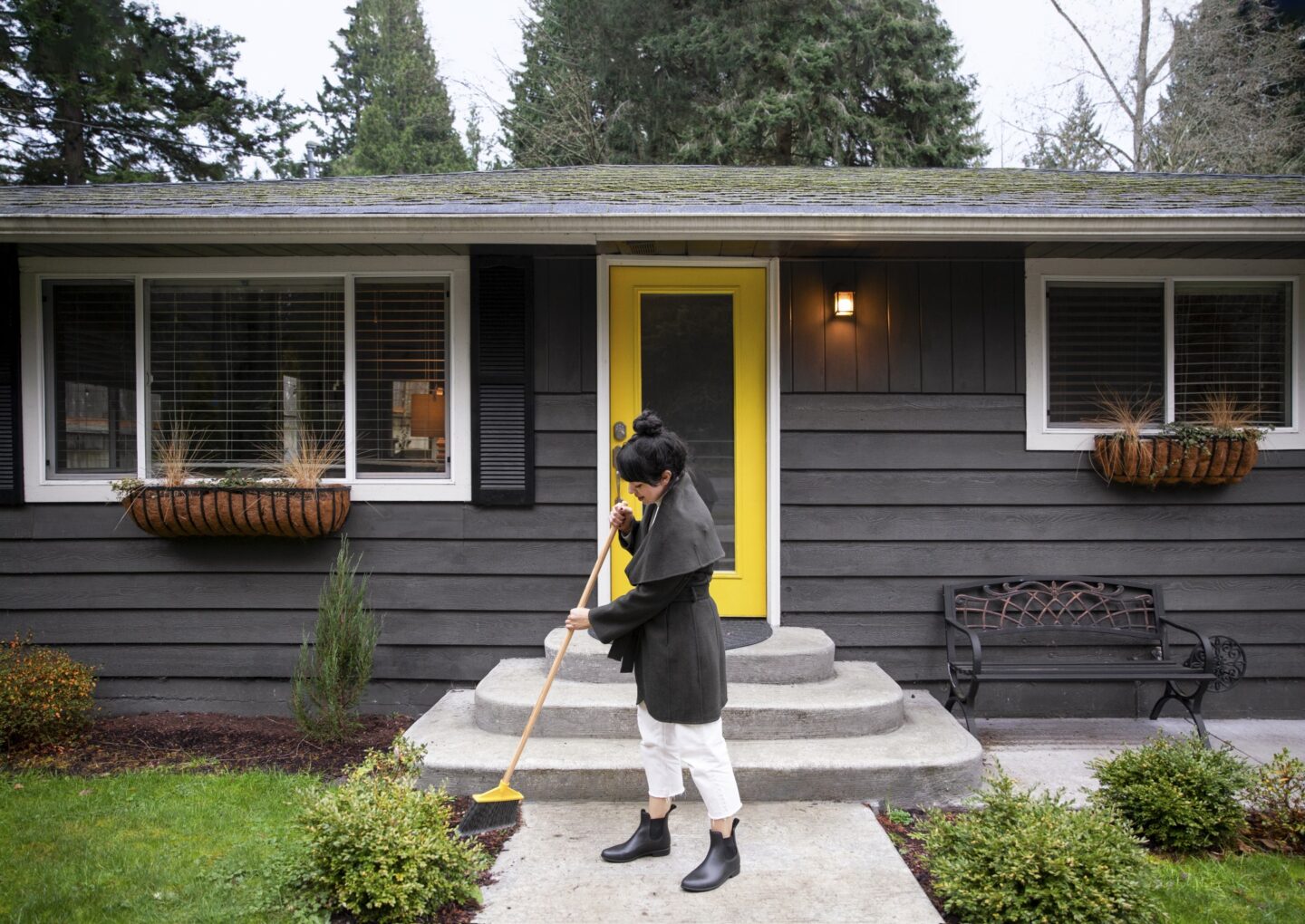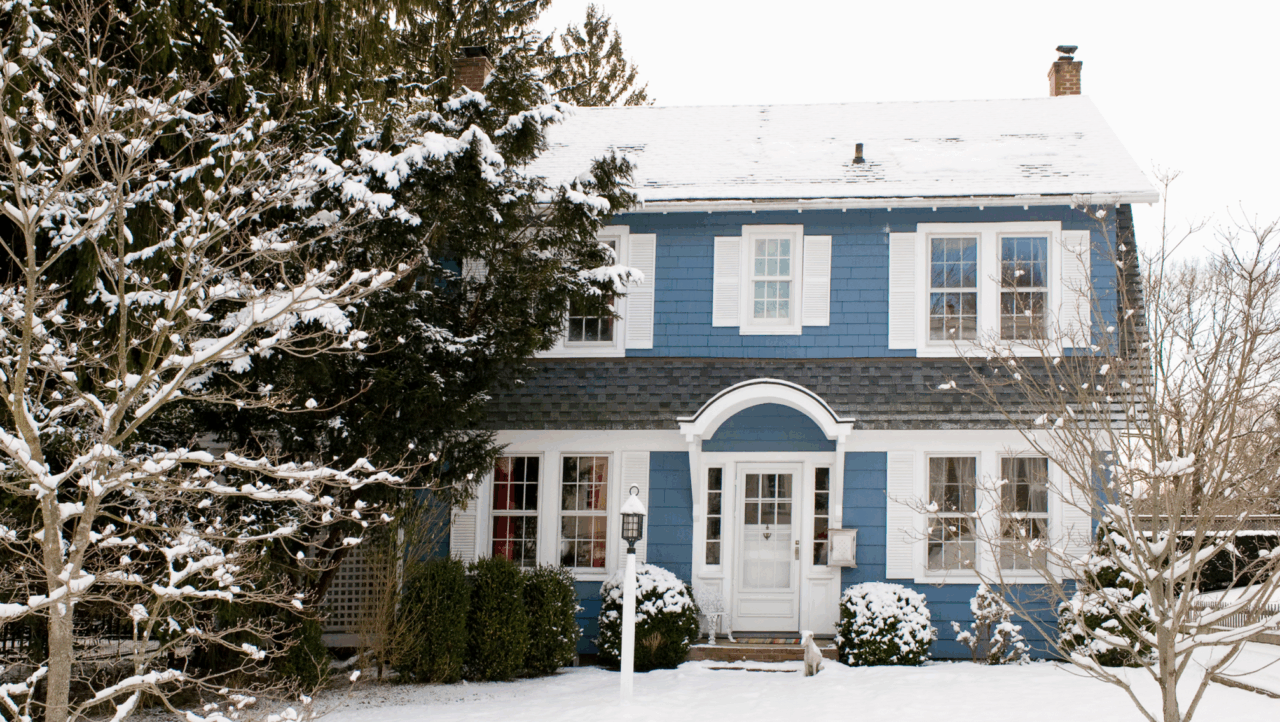How to Get Your House Ready to Sell
Make it a smooth sale with this checklist of things to do six months, 60 days, 30 days and two weeks out.


Written by Shawnna Stiver on July 10, 2025
Reviewed by Megan Swindells and Orphe Divounguy
Smart sellers know that every strategic decision — from essential repairs to professional staging — directly impacts both the final sale price of a home and the speed with which buyers respond to their listing.
Preparing to sell a home can seem overwhelming, but it doesn’t have to be. By creating a clear timeline, prioritizing the right improvements, and understanding what today’s buyers expect, you can position your home to stand out in a competitive market. Whether you’re a first-time seller or have sold homes before, having a structured plan ensures you don’t miss critical steps when getting your house ready to sell that could cost you thousands of dollars or valuable time.
1. Create your selling timeline
The foundation of a successful home sale starts with strategic timing. Most sellers who achieve their target price and timeline begin preparing their house 60-90 days before listing, leaving adequate time for thoughtful improvements and eliminating rushed decisions.
A well-planned timeline serves multiple purposes: it can prevent costly last-minute repairs, allows you to spread preparation costs across several months, and ensures your home hits the market when conditions are most favorable. More importantly, it gives you the mental bandwidth to make smart decisions about which home improvements will deliver the best return on investment.
Choose your listing date
Consider seasonal market trends, and keep in mind that spring typically generates the highest buyer activity. According to 2024 Zillow research, sellers who listed their homes in the last two weeks of May earned an additional 1.6% on the sale, or about $5,600 on the typical U.S. home. While many factors can affect the timing premium, sellers generally get better-than-average returns if they list between March 15 and July 31. Personal circumstances, local inventory levels, and average days on market for similar homes in your neighborhood should also influence your timing decision.
Work backward from your listing date to create a plan
Start with your ideal listing date, then work backward to get your house ready to sell.
- 8-12 weeks before listing: Begin major preparations and interview potential real estate agents
- 6-8 weeks before listing: Complete strategic repairs and home improvements
- 4-6 weeks before listing: Start decluttering, deep cleaning, and staging
- 2-4 weeks before listing: Schedule professional photography and finalize listing materials
- 1-2 weeks before listing: Add final touches and prepare for showing schedule
Local market conditions can vary significantly from national trends, so research your specific area’s seasonal patterns before finalizing your timeline.
2. Research your local market
Understanding your competition helps you price strategically and identify what buyers expect in your price range. Knowledge of recent sales, current inventory, and market trends should inform every preparation decision.
Analyze comparable sales
Do a comparative market analysis to determine the value of your home. Review recently sold homes within a half-mile radius that share similar square footage, bedroom count, and key features. Pay particular attention to sale prices, days on market, and unique selling points that may have influenced buyer decisions.
Monitor current conditions
Check active listings to understand your direct competition and review seasonal selling patterns in your area. Mortgage interest rate fluctuations can significantly impact buyer demand and purchasing power, so staying informed about rate trends helps you time your listing strategically.
3. Decide if you want to work with an agent
Experienced agents provide market expertise, pricing strategy, and negotiation skills that typically more than pay for their services through higher sale prices and smoother transactions. The right agent brings local market knowledge, professional networks, and marketing resources that individual sellers may not be able to replicate on their own.
For sellers who prefer to maintain full control over their transaction, selling for sale by owner (FSBO) allows you to keep the full sale proceeds while managing the process yourself.
If you decide to go the agent route, consider working with a Zillow partner agent who has local market knowledge, a robust marketing reach, and can support you through getting your house ready to sell and closing the deal.
4. Make strategic repairs
According to Zillow research, 72% of sellers complete at least one improvement project before listing. It’s wise to address maintenance issues before they become negotiation obstacles by promptly fixing problems that could derail a sale, while avoiding over-improvements that don’t deliver returns.
Focus on functionality
Fix leaky faucets, squeaky doors, and non-functioning outlets before they become negotiation obstacles. These visible problems signal poor maintenance to buyers and can deter offers.
Consider a pre-inspection
A pre-inspection can be a $400-500 investment but could save money in post-offer negotiations. It can also demonstrate transparency, and build buyer confidence in your property’s condition.
Resist the urge to over-renovate
Smart sellers prioritize maintenance issues that could become deal-breakers over cosmetic updates that may not appeal to every buyer. Remember, the goal is making your home move-in ready, not perfect.
5. Declutter and deep clean
A spotless, clutter-free home photographs better, shows larger and allows buyers to envision themselves living there. This step requires time, but it makes a big impact on a buyer’s first impressions.
Declutter room by room
Remove personal collections, excess furniture, and decorative items that make spaces feel cramped or overly personalized. Clear all countertops, tabletops, and horizontal surfaces to create clean lines and highlight your home’s architecture.
Deep clean every surface
Kitchens need special attention, including cleaning inside appliances, wiping down cabinet interiors, and organizing drawers. In bathrooms, scrub grout, polish fixtures, and tackle often-overlooked spots like behind toilets and under sinks.
Refresh flooring and windows
Steam-cleaning carpets improves appearance and removes odors that can deter buyers. Clean all windows — inside and out — to maximize natural light and enhance your home’s visual appeal.
Remember, a clean, organized home allows buyers to focus on your property’s best features instead of getting distracted by clutter or maintenance concerns.
6. Boost curb appeal
Your home’s exterior creates the first impression for every buyer who sees your listing online or drives up for a showing. A well-maintained exterior signals that the interior is equally cared for, which is a good way to start.
Keep your lawn and landscaping pristine
A well-maintained lawn signals overall property care, while overgrown or patchy grass suggests neglect that buyers may assume extends to the home’s interior and mechanical systems.
Update your entrance
If necessary, paint or stain your front door in a fresh, contemporary color that complements your home’s architectural style. New or updated hardware, house numbers, and outdoor lighting fixtures modernize your entrance affordably while ensuring clear visibility for potential buyers visiting during evening hours.
Add seasonal touches
Spring listings can benefit from colorful flowers and fresh mulch, while summer sales should emphasize lush green lawns and attractive potted plants. Fall sellers can leverage autumn’s natural beauty with tasteful seasonal decorations, and winter listings require extra attention to walkway maintenance.
Even modest investments of a few hundred dollars in curb appeal improvements can increase perceived property value by thousands. And the best part? Great curb appeal gets buyers excited to see what’s inside your home!
7. Apply fresh, neutral paint
Paint can deliver the highest return on investment of any home improvement. Strategic color choices make spaces feel larger, brighter, and move-in ready.
Select neutral tones
Light, neutral tones like soft gray, warm beige, or greige create sophisticated backdrops for any furnishing style and appeal to a wide range of buyers. Stick to one or two coordinating colors throughout your home to create continuity, using crisp white or off-white for trim and ceilings to add contrast and height to rooms.
Prioritize high-impact areas
High-traffic spaces like entryways, living rooms, and kitchens benefit most from neutral updates. Bedrooms — especially the primary suite — should feel serene and spa-like with soft, calming tones.
According to Zillow research, 32% of sellers invest in interior repainting before listing — a smart move that helps homes appear clean, modern, and well-maintained to potential buyers.
8. Stage key living spaces
Professional staging can increase sale prices and help sell homes faster. In fact, the National Association of Realtors reports that 83% of buyers’ agents say staging makes it easier for buyers to picture a property as their future home. Focus staging efforts on the rooms buyers spend the most time evaluating: living areas, kitchen, and primary bedroom.
Arrange furniture strategically
Remove personal items that prevent buyers from imagining themselves in the space. Family photos, highly specific decor, and collections should be stored away, replaced with neutral accessories like coordinating throw pillows, tasteful artwork, and fresh plants that add warmth without personality.
Use budget-friendly approaches
Rearrange existing furniture to open up space and improve traffic flow. Borrowing neutral decor items from friends or family is an option for adding attractive elements to your home without breaking the bank.
Consider professional services
Luxury properties or homes with challenging layouts can benefit from expert spatial planning. Even partial staging of key rooms can dramatically improve buyer perception and emotional connection to your property.
Staged homes not only stand out in online listings but also feel more welcoming in person — giving you a strategic edge in today’s competitive market.
9. Create a showcase listing
Select Zillow partner agents offer Showcase — a premium listing experience with 3D tours and interactive floor plans that sell homes for $7,000 more on average. According to 2024 Zillow data, 70% of buyers agreed that 3D tours would help them get a better feel for the space than static photos. Adding 3D tours and expertly crafted descriptions will give your listing a significant competitive advantage.
Invest in professional photography
Capture your home’s best features with optimal lighting and expert composition. Experienced photographers understand how to make rooms appear spacious and inviting, while showcasing architectural details and natural light that attract online browsers.
Add enhanced media features
3D virtual tours allow buyers to explore your property remotely and develop emotional connections before scheduling in-person visits. Video walkthroughs provide dynamic perspectives on room relationships and home flow that static photos cannot convey.
Write compelling descriptions
Use descriptive language that helps buyers imagine their daily life in your space, including specific details about room sizes, storage solutions, recent updates, and neighborhood amenities.
A Zillow partner agent will work with you to ensure your listing includes high-impact photography, virtual tours, and well-written descriptions — all designed to maximize visibility and attract serious buyers from day one.
10. Gather the paperwork you’ll need to sell
Organized paperwork streamlines the selling process and builds buyer confidence by demonstrating proper maintenance and legal compliance. Prepare documents early to avoid delays during negotiations.
Compile financial records
Locate your property deed, recent mortgage statements with current payoff information, and property tax records that buyers need for financing decisions. Homeowners insurance documentation and any claims history should be readily available, along with HOA documents, fees, and restriction details if applicable.
Gather records of home improvements
Gather permits for any renovations, additions, or major repairs that add value and demonstrate legal compliance. Warranties for appliances, HVAC systems, and major home components should be organized and transferable to new owners.
Complete required disclosures
Document any known issues, even if they’ve been repaired, and include information about neighborhood factors, noise levels, or other considerations that might affect buyer decisions. Having all documentation organized and easily accessible speeds the closing process and prevents delays that could jeopardize your sale timeline or negotiation position.
11. Prepare for showings
Once your home hits the market, it’s important to keep it ready for buyer visits on short notice. Many buyers tour multiple homes in a day, and a well-prepared space can make yours stand out, whether they visit first or last. A clean, welcoming space helps buyers imagine themselves living there, and makes your home more competitive.
Arrange showing logistics
Work with your agent to establish showing windows and consider installing a showing service or lockbox for flexibility. Plan to be away during all showings to let buyers explore freely, and keep pets secured or removed during showing times.
Set up daily routines
Open all blinds and curtains to maximize natural light, turn on lights throughout the house even during the daytime, and maintain spotless conditions with daily tidying. Remove trash and ensure fresh, neutral scents while storing valuables, prescription medications, and personal documents securely.
Perfect final touches
Place fresh flowers or plants for natural fragrance and color, ensure fresh towels are in bathrooms, and double-check that all lights work and rooms are accessible. Maintain a comfortable temperature year-round, and avoid overwhelming scents like coffee or cookies.
These high-end touches help your home feel move-in ready and can leave a lasting impression that influences buyer decisions.
Ready to sell? Explore your selling options with Zillow.
Ready for a new address?
Get an instant cash offer or list with a local partner agent.
Explore selling optionsRelated Articles
Sell your home with a winning strategy
Here’s how to maximize your home sale with the right selling plan.

Build a smart selling plan
Talk to your agent about their marketing approach - especially online - to ensure you’re getting the best possible price for your home.



